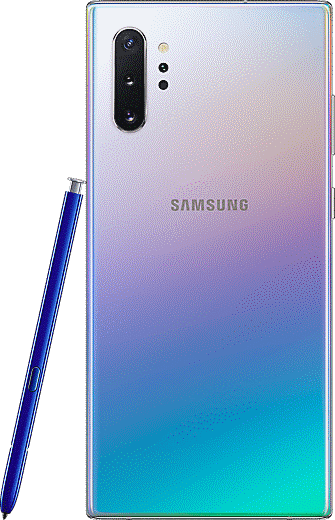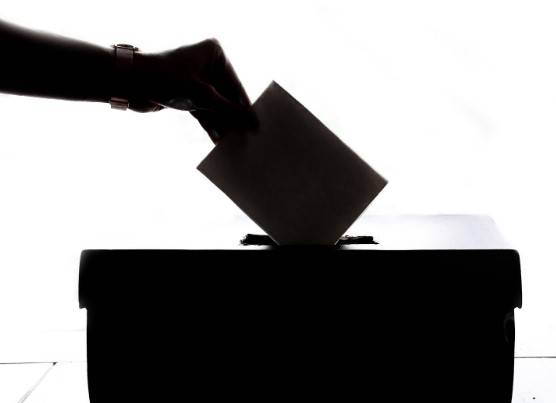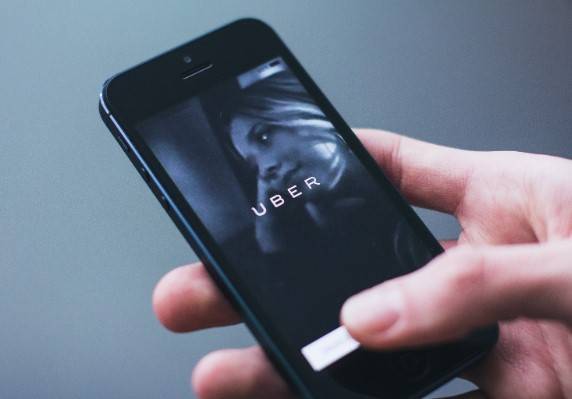Video Transcript
Cody: It didn’t look sexy, but it might save your relationship. Ryan, hello, sir. How are you?
Ryan: Thank you, professor, for allowing me to talk about science today.
Cody: You’re welcome. You’re welcome.
Voice Off Camera: Science!!
Ryan: This is gonna be science. Okay. So let’s talk about getting to sleep, right? How many hours of sleep do you get at night?
Cody: Me?
Ryan: Yeah.
Cody: Do you wanna know, really?
Ryan: On average.
Cody: Four and a half, five.
Ryan: See? That’s terrible. Did you know that you are more likely to be fat because of that?
Cody: Oh, yeah. Totally. Look at…
Voice Off Camera: Don’t tell [inaudible 00:00:27] this.
Ryan: You’re more likely to, if you get less than seven hours of sleep, to not have a healthy body mass index.
Cody: I know. I know.
Ryan: Isn’t that terrible?
Cody: [inaudible 00:00:35], it’s terrible.
Ryan: So we’ll talk about some free ways first. We’re gonna do free, then we’re gonna go to expensive.
Cody: Okay.
Ryan: So for free, one of the things you can do is just unplug at night, right? Set a reminder right before you go to bed to remind yourself to go to bed. So you’re sitting on the couch watching “Game of Thrones” and you’re like, “Oh, shoot. I gotta go to bed.”
Cody: Okay, okay.
Ryan: Set on Night Shift mode, it turns off the blue light on your phone, so that way, it doesn’t bother with your circadian rhythms.
Cody: That’s good.
Ryan: Also you can set a screen time or device time on your phone to turn off certain apps. So if you have a certain habit of watching Facebook or playing Instagram or whatever on there, you can turn that off so it’s unavailable at night time, and set the “do not disturb” so it’s not getting text messages and dings and dongs and all kinds of stuff while you’re trying to sleep.
Cody: Okay.
Ryan: And that will, overall, help you get a nice, nice sleep.
Cody: That’s nice.
Ryan: Now, you can also wind down at the end of the night. Use an app like Smiling Mind. This is a meditation app, it just allows you to kinda customize a nice, relaxing way to fall asleep.
Cody: Okay. I like that.
Ryan: You can also use Noisli. Noisli is pretty cool, because what it does is let you customize your own white noise. That’s… My favorite here is, they’ve got coffee shop, so you can set a coffee shop, just kind of a low murmur noise. You pair that with a little bit of fire, and it’s just screaming. That’s all that is, really. But otherwise, it works quite nicely. [crosstalk 00:01:51]
Cody: It sort of reminds you of your kids when they were little.
Ryan: So the next thing you can do is monitor your sleep.
Cody: Okay.
Ryan: So this is something by Withings. This is $100. This goes underneath your mattress, and the reason why you wanna monitor your sleep is you gotta check your patterns. What if you’re waking up in the middle of the night, or a couple of hours before your alarm goes off, or you have a snoring spouse? You just wanna know what your sleep patterns are. And Withings, after you use it for about eight weeks, it’ll set up its own little sleep coaching program, kinda giving you recommendations on when to go to sleep, how long you’re gonna be in sleep, when to set your alarm and things like that, based on your patterns.
Cody: Okay.
Ryan: Pretty cool. 100 bucks. This is by Philips. This is pretty cool. So, one of the funny things about this is you put this on behind your ear. You put one of these little, attaches behind your ear, it snaps in, and as you hit deep sleep at night, it recognizes it and plays little tones in your ear to keep you in that deep sleep state. So you get a more restful sleep, even if you’re not getting more hours of sleep.
Cody: Okay.
Ryan: Is that pretty cool?
Cody: Yeah, that’s pretty cool.
Ryan: And I think I that one is…
Cody: And it looks so sexy.
Ryan: It is $399, and it is super sexy. The nice thing is, is you absolutely will get more sleep, because as soon as you put this on, your wife is making you go to sleep because she’s not gonna touch you in any other way.
Cody: Yeah, nobody wants to talk to you.
Ryan: So, lastly, let’s say you’ve got a…
Cody: This is fascinating. Yeah, okay.
Ryan: …a spouse that is kind of a noisy sleeper, right? And they’re snoring. This is called the Sleep Nora System. You put this on a headboard above your head, and it recognizes once you start snoring. Once you do, this little pad here inflates underneath your pillow, and just sort of moves your head one side to the other, keeps you asleep, but it repositions your head so you stop snoring.
Voice Off Camera: Yes. Oh, my goodness.
Cody: That is fascinating.
Voice Off Camera: Sign me up right now.
Ryan: This will save you from getting punched in the gut when you wake up in the morning, and your wife’s like, “I couldn’t sleep at all last night.” You just, “Okay, here you go.”
Cody: It is a little expensive.
Ryan: It’s $399. If you’ve been on Facebook…
Voice Off Camera: It’s worth it.
Speaker 2: …any time in the last year, you’ve seen the ads for this, and it is remarkable. I mean, it will just kinda slightly move your head just right when you need it.
Voice Off Camera: It’s great for your marriage.
Cody: $399, or your wife smothering you with a pillow.
Voice Off Camera: That is hilarious.
Cody: $399, or your wife smothering you to death with a pillow.
Ryan: Depends on what you’re into, I guess. But, yeah.
Voice Off Camera: Right.
Cody: Thank you very much, Ryan.
Voice Off Camera: Ryan.
Ryan: You’re welcome.
Cody: I’m just gonna let that slide. Gonna let it go. Let it go. You’ll be wearing that around all day long today. You know what you did, sir.
Ryan: I’m gonna put this on right now because I’m gonna take a little nap between segments here.
Cody: Yeah. That’s sexy.
Voice Off Camera: Perfect.
Ryan: That’s my sexy look.
Cody: I like it. I like it. I like it. Back to you, guys.
If you suffer from a chronic lack of sleep, you’re not alone. According to the National Institute of Health, a full one-third of adults suffer from some form of chronic sleep problem. While most of us are all too aware of that unpleasant “underslept” feeling, fewer of us are aware of how important good sleep is for health and well-being.
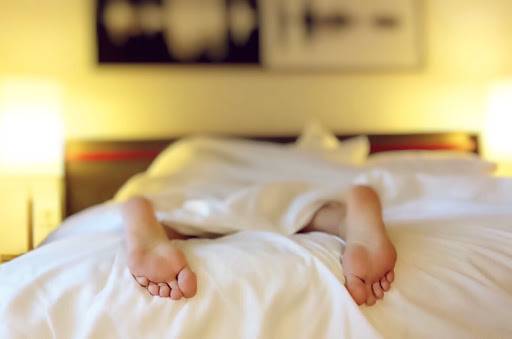
People who sleep poorly are 80 percent more likely to have an unhealthy body mass index. Poor sleep is also linked to a range of health issues like high blood pressure, heart problems, and mental illness. It’s easier said than done, but finding a way to get enough sleep isn’t just an important part of feeling spry in the morning. It’s also an important health priority.
Technology is Part of the Problem
So what role does technology play in getting a good night’s sleep? It’s complex.
Technology is undoubtedly part of the problem. That bright light we thrust in our faces for that one extra game of candy crush before bed plays havoc with our circadian rhythms. It basically tricks the brain into thinking it’s daytime, forcing it to enter an induced state of wakefulness right at the moment your brain should be releasing sleep chemicals.
Light aside though, technology itself is a stimulant. We’re awash with productivity apps, work emails, and chat sessions — not to mention the huge library of entertainment options at our disposal, from Netflix to gaming.
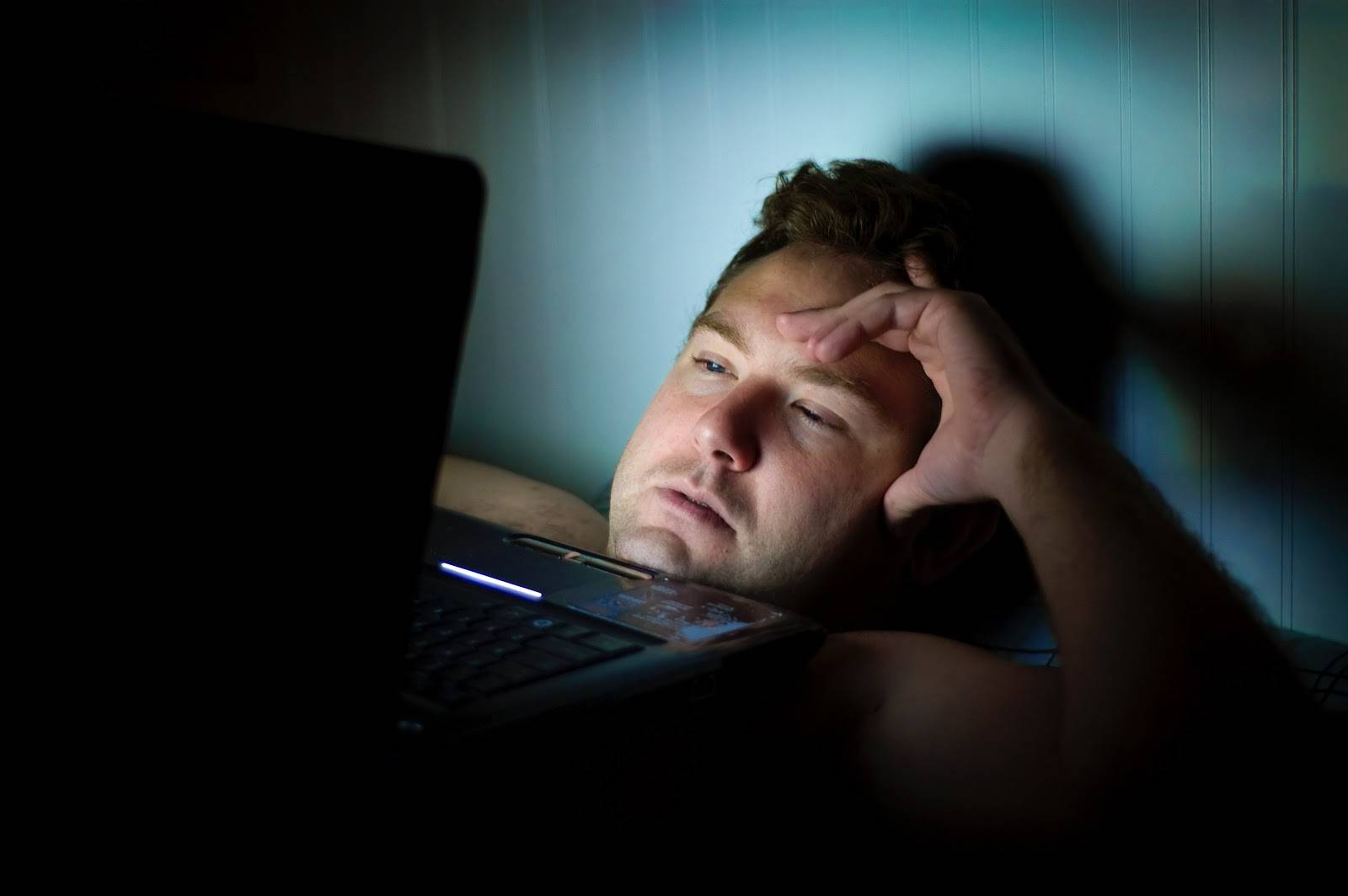
These trappings of technology are fun. They’re useful. But they’re also all geared to drawing you in and demanding your attention — and sleep is invariably the part of our lives which gets systematically pushed aside.
The scientific consensus is that we all need to get better at how we use technology at night. Strategies may include:
- Setting a reminder on your phone to get ready for bed
- Using your phone’s night-time setting to cut back on that harsh blue light
- Setting your phone to switch to “Do Not Disturb” mode after 8 pm.
Technology Can Also Be Part of the Solution
At the same time, the right technologies can actually be really useful in getting more sleep. There are a range of apps and hardware solutions out there which are designed to address one or more obstacles to good sleep. These work through sound manipulation, gentle position adjustment, light management, and sleep mindfulness. Let’s take a look at some examples.
Video Transcript
Tina: As you should.
Cody: If you’re gonna crank up the brightness on my iPad, it’s not gonna last through the day. You know, the battery [crosstalk 00:00:05].
Tina: Holy moly, that is bright. Why so bright?
Ryan: We’re going to get to that. You’re jumping the…
Cody: Oh, I’m sorry.
Ryan: You’re going too fast here. Okay. So, first, let’s talk about some reasons why you might not be getting enough sleep, and one of those is, like, a constricted airway, right, you’re not getting enough oxygen. So this is called the O2 Vibe Sleep and Fitness Monitor. You put this on your wrist and strap this around your thumb here, and what it’ll do is it’ll monitor your sleep and your oxygen throughout the night. And if you’re not getting enough oxygen because you’ve got sort of a constricted airway, it’ll kinda buzz your thumb a little bit kinda causing you to slightly stir and change your position, just kinda like that Smart Nora does, and it’ll allow you to kinda get some more air. Pretty cool. So, sleep monitor, this allows you… this is $199 but it gets to really to monitor all the oxygen that you’re getting throughout the night.
Next is…this is called the Philips Smart Light Set and this is 149 bucks. You basically get four lights and a little bridge here that you can hook up to your smartphone. And if you remember that Withings pad that we showed earlier that goes underneath your mattress, you can set up different little smart…I don’t know how to say it…algorithms or changes so as soon as you lay down on your bed, you can have your lights start to dim down and slowly turn off.
Cody: Oh, really? Okay, that’s cool.
Ryan: Right? And then at a certain time in the morning, you can have your lights sorta come up and sorta make it look like it’s a sunrise and warmer lights rather than having those real cold blue lights. So, it’d be pretty nice, right? For the 149 bucks, put a little smart light in your life.
Cody: That’s pretty cool.
Ryan: This is the Verilux Happy Light Torch.
Tina: That’s a torch.
Ryan: This is 80 bucks, and this is pretty cool. And what this does is it’s supposed to reset your circadian rhythm. Most of the time, we’re spending almost all of our time indoors rather than outdoors, so we’re not getting the sun to really give us the information we need about what time of day it is and whether we should be awake or whether we should be asleep, so this sorta lets you reset. And it’s got different settings, so you can go blue light, brown light…I don’t know if this is picking up on the monitor at all. And then you can set the different brightness levels and the key is to set this on your desk or wherever your workstation is, and it just kind of resets your rhythms and say, “Hey, it’s daytime. I need to be awake and alert,” and then at nighttime, your body knows, “Oh, okay. Maybe I should be going to sleep.”
Tina: Don’t they do that to chickens?
Ryan: Yeah. Why not? Let’s do it to chickens.
Tina: They do it to make them lay eggs. They lay eggs more, right?
Cody: Oh, yeah. They do, don’t they?
Ryan: Oh, all right. I was thinking of other things, but that makes sense. Anyway, let’s go back to this.
Cody: What happened to you?
Ryan: I don’t know. I was…
Man: Did you get enough sleep?
Ryan: I didn’t get enough sleep. I think that’s the problem.
Cody: I guess not.
Ryan: So, if you’re looking for a cheap easy way to monitor your sleep, you could get an iPhone or an Android app called Sleep Cycle. You turn this on, set it next to your bed, it monitors your snoring, monitors your sleep cycles, and kinda gives you information that you might need about how to sleep, when to sleep, when to go to…when to wake up, when to go to bed at night. And it’s totally free. It’s called Sleep Cycle. You can get it at sleepcycle.com.
Cody: Nice.
Ryan: How cool is that?
Cody: Will science ever figure out why I can nap like a superhero but I can’t sleep at night?
Ryan: Probably because you’re napping too much. That would be my guess. I don’t even need science for that.
Cody: Sometimes I do 20. Sometimes I do two hours. Could be the chickens. I blame the chickens.
Tina: The chickens. We’re gonna blame the chickens.
Cody: Adobo, I’m talking to you. Talking to you, Adobo. Thank you very much, Ryan.
Ryan: You’re welcome.
Cody: Thank you. That was really interesting stuff.
Ryan: That’s it. Now you can sleep better.
Cody: I still think the inflatable pillow thing was my favorite one.
Ryan: Smart Nora is pretty stinking cool. We should do a whole segment where Cody tries to sleep and then somebody keeps turning it on and slapping his head around. That would be pretty fun.
Cody: Yeah, that would be what would happen with it. All right. Thank you very much, Ryan. Back to you guys.
Sound manipulation
Noisli- Free
Sound, of course, can greatly affect how well we sleep. If you live in a neighborhood with lots of traffic or even if you happen to sleep beside someone with a bit of a snoring problem, intrusive sounds can jolt you out of your REM cycle all too easily.
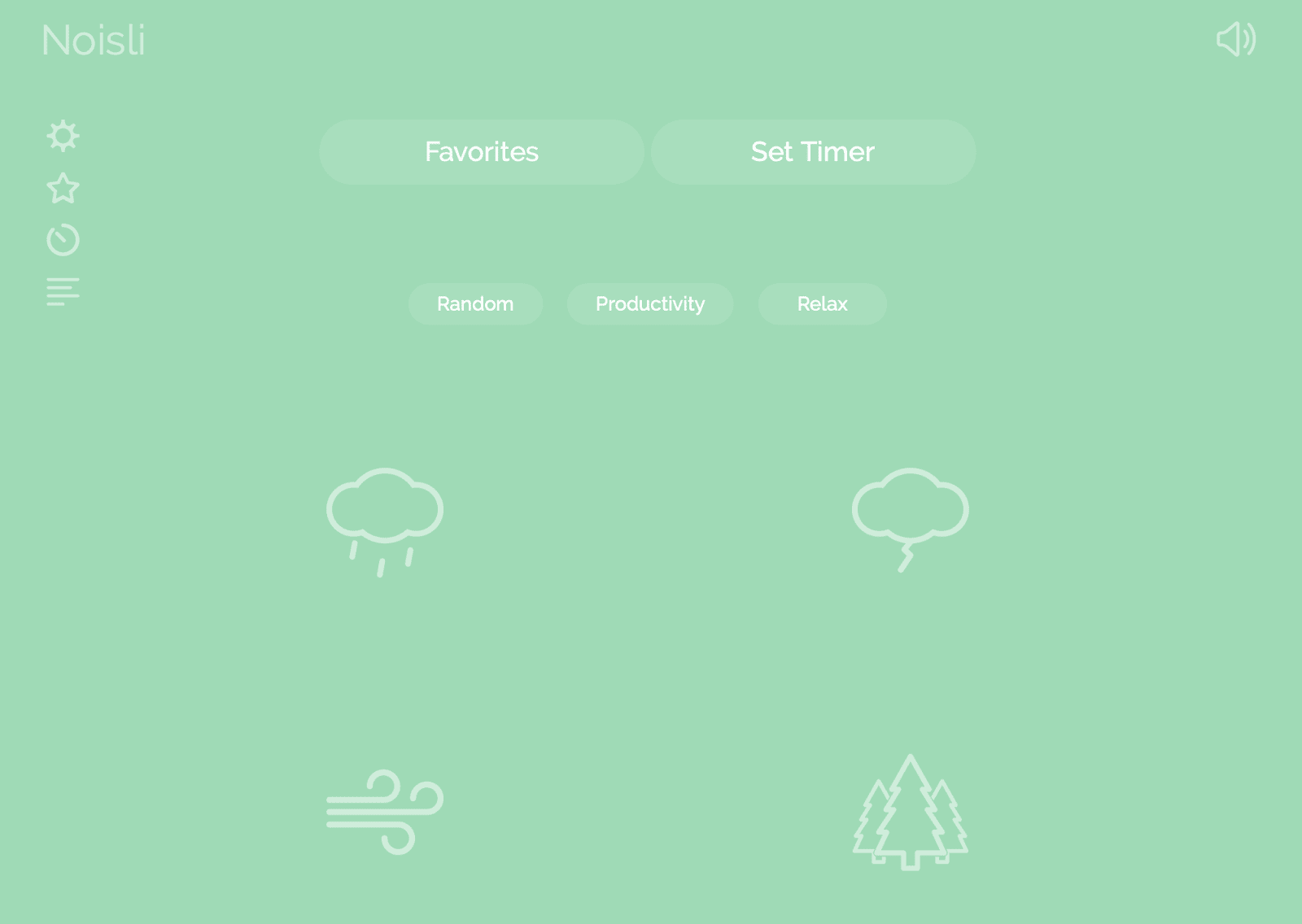
Noisli is a website offering a collection of gentle white noise tracks which can effectively mask disruptive sounds. It also allows you to mix sounds together to achieve a mix you find both relaxing and effective as masking white noise.
It’s a free online service and an excellent site to have in your favorites if you’re traveling.
Philips SmartSleep Deep Sleep Headband – $399
While simple white noise is probably all you need if sound is an occasional disruption, if your lifestyle means you consistently aren’t getting enough sleep, it may be time to consider a more granular solution.
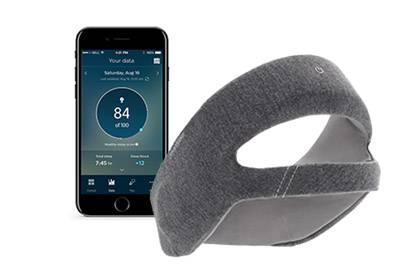
The Philips SmartSleep Headband is a comfortable headband equipped with low-profile ear speakers, specifically designed for sleep comfort. When you’re drifting off to sleep, the headband plays gentle masking white noise, customized to blocking ambient sounds from jolting you awake. When you enter deep sleep, two small sensors detect the transition and gradually shift to quieter audio tones designed to boost the quality and duration of your slow wave sleep.
This product is a great option if you have persistent sleep problems and need a bit more help than simple white noise.
Sleep Cycle Alarm Clock – Free
Good quality sleep isn’t just about getting enough hours. It’s also about how you wake up. If you find you’re constantly sleeping through your alarm or suffer from prolonged grogginess after you wake up, the Sleep Cycle Alarm Clock app may be a useful addition to your sleep technology toolkit.
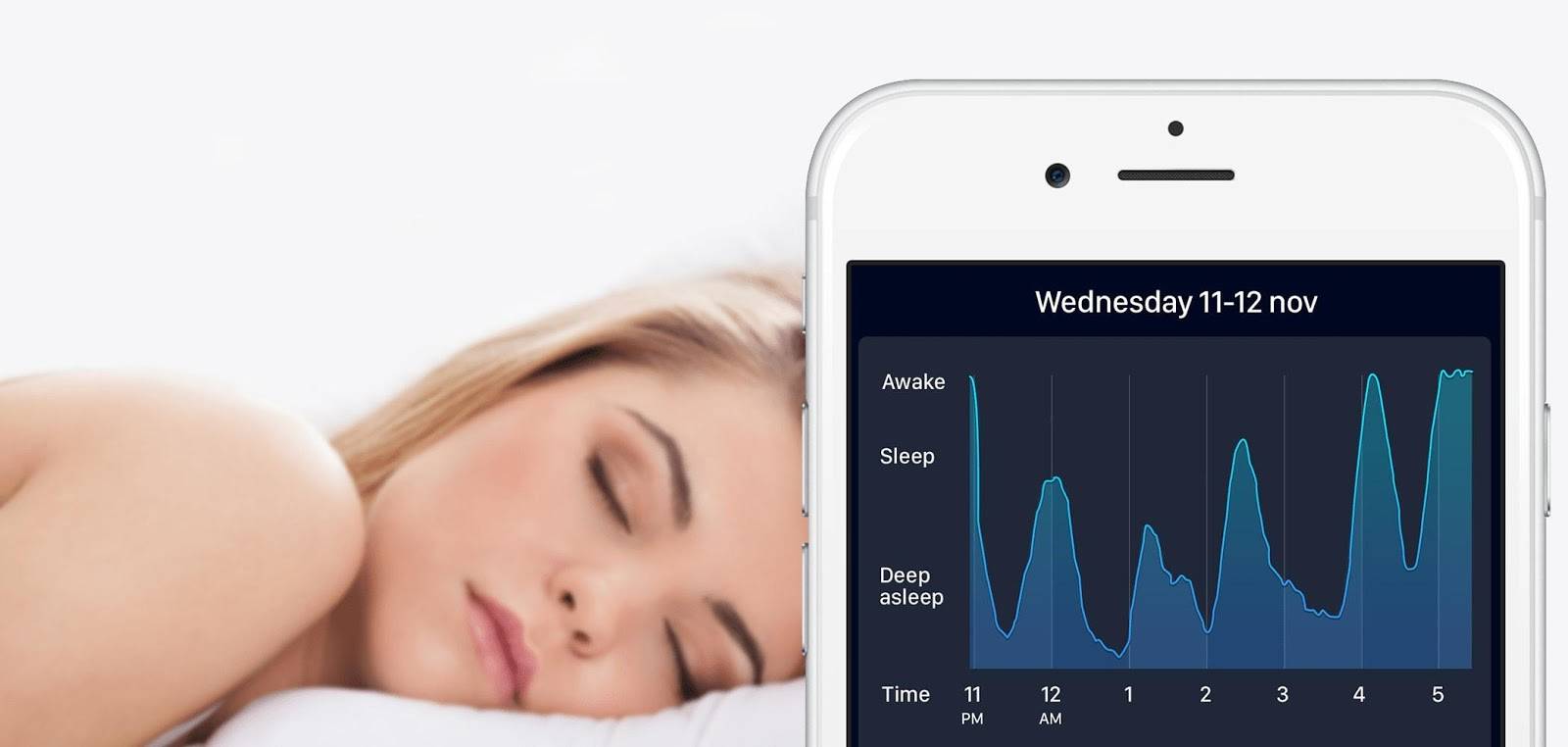
This app uses sound analysis to identify when you transition from deep to light sleep, triggering a gentle alarm to slowly pull you from a sleep state to wakefulness.
It’s a more natural way to wake up and many find it helps them start the day feeling more rested and relaxed.
Position Adjustment
Smart Nora – $299
Snoring can pose a big problem in getting decent, uninterrupted sleep. Of course, it’s not great for the partner, whose deep sleep will likely be disrupted by the sound of snoring. But for the person doing the snoring, it can also be a big problem, because chronic and ongoing snoring can disrupt the airways, resulting in light and patchy sleep.

Smart Nora is designed to gently nudge the chronic snorer into altering their sleeping position when required. This tiny device sits inside your pillowcase. When it detects snoring it gently inflates, slightly altering the sleeper’s head position without waking them up.
O2 Vibe Sleep & Fitness Monitor by Bodimetrics – $199
The Vibe Sleep & Fitness Monitor monitors your breathing at night but in a different way. A tiny sensor on your thumb monitors your blood oxygen levels, emitting a small vibration when your oxygenation gets below a pre-set level.

It’s designed to wake you up just enough to change your sleeping position to a better breathing position without pulling you out of sleep completely.
Light Management
Hue Smart Lighting – MSRP $150
The problem with standard lights is that they can inadvertently simulate the waking effects of the sun. This is particularly the case with LED lights, with their harsher, blue light component.

The Hue Smart Lighting system gives you control over your lighting in ways that can be very helpful for sleep. The color component can be modified not to disrupt your circadian rhythms. The lights can also be configured to gently dim in the evening and gently brighten in the mornings, thus giving you the benefits of a more natural and sleep-friendly approach to lighting.
Verilux HappyLight Touch – $80
The Verilux HappyLight Touch also aims to provide a light source which is more conducive to good quality sleep.
These lights are full spectrum, meaning they precisely mimic the quality of sunlight. Used throughout the day, this product can convince your brain that you’ve spent a day out in the sun, thus activating your body’s natural drowsiness response in the evening.
Sleep Mindfulness
Withings Sleep – $100
Not all technological options are about altering your physical surroundings. Some are made to help you approach sleep differently. The Withings Sleep, for example, is a sleep tracking mattress pad, designed to give you more insight into how you sleep and what you can do to improve it.

The mattress pad tracks your sleep cycles through heart-rate tracking, snore detection and an array of movement sensors. Over time, it helps you build a picture of your unique sleep habits and challenges, offering a clearer picture of the impact of such variables as when you go to sleep, temperature, the impact of sound, and more.
Smiling Mind – Free
Finally, you may like to explore the impact of meditation on sleep through Smiling Mind. This free online app offers a range of meditation exercises which can bring a bit of calm back into your life. Clearing your mind and letting go of the day’s stresses may well be one crucial piece of the sleep puzzle worth exploring.
Getting a good night’s sleep is a fundamental ingredient for a healthy and productive life. While technology may be part of your sleep problem, it could also be part of a solution. Whatever devices you use though, setting a rule for yourself of when you turn off your screen and “power down” is probably a very good idea.
Like This? We have more!
Sign up below to be kept in the loop and be sent more content like this in the future!

